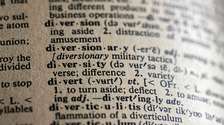You undoubtedly must have heard about mnemonics, and you’ve probably tried some of them out for yourself. I believe there might be some universal mnemonics that work for everybody, but not all of them are like this. To make them stick in your mind, you’ll perhaps need to adjust them, make them more personal, or create your own individual images, rhymes, etc. Below, I have made a collection of mnemonics that I use regularly for Russian. Some of them were invented by my students or me, and some I found in a great audio course (Michele Thomas Method, Russian).
Before we start the collection, I would like to say a few words about when it’s worth using mnemonics:
- In the very beginning of an elementary course, when students haven’t yet gotten used to the strange sound of a completely new language.
- When there are confusing words (that sound or look similar) which makes them hard to remember. For example: Я пью́ (I drink) and Я пою́ (I sing).
- Any other individual difficulties when simple learning and repetition doesn’t help.
Russian Mnemonics
Я хочу́ (ja hachoó): a sneezing verb
- Я хочу means “I want.” Imagine yourself sneezing (achoo!) when you want something.
Mountain Dew я пью! (ja pyjú): I drink Mountain Dew!
- This short rhyme helps in remembering that “I drink” is Я пью (and not пою, which is “sing”).
Бы́стро (býstro): eat quickly in a bistro
- A small French restaurant, or a bistro (where you can quickly eat simple meals), might help you remember this Russian word for “quickly.”
Внеза́пно (vniZÁPna): suddenly
- Remember the ZAP interjection to indicate a sudden or instantaneous occurrence.
Ду́мать (dúmat’): to think
- If you know that the Russian parliament is called The State Duma, then you will easily remember that ду́мать means “to think” because that’s what they are supposed to do in the parliament!
Далеко́ (dalekó): echo…
- The pronunciation of the word echo (which travels far away) will help you to recollect that “far away” is далеко!
Э́то чат – здесь не молча́т! (Eto chat – zdes’ ne molchát)
- It’s a chat- they don’t keep silent here. The rhymed mnemonic is used to learn the 3rd person plural form for the verb молча́ть, which means “to keep silent.”
Я могу́ (ja magú): mug
- Я могу means “I can.” Imagine you have a mug with “I CAN!” written on it!
Понима́ть (ponymát’): to understand
- A nice image to remember this verb is to imagine a pony sitting on a mat. I ask it a question, but the pony shakes its head and says, “I’m sorry, I don’t understand you!”
(Алло́), Буш слу́шает! (alló, Bush slúshajet)
- (Hello), Bush is listening! Remember this rhyme if you have problems memorizing and distinguishing the verbs for “to listen,” слу́шать (slúshat’) and “to hear,” слы́шать (slýshat’).
Грипп (grip): The flu grips you!
- Грипп means “the flu,” so you can imagine how it suddenly GRIPS you!
Перестро́йка (peristrójka): perestroika
- If you know the word perestroika (the program of economic and political reform in the Soviet Union initiated by Mikhail Gorbachev in 1986) and that it literally means “re-building,” you can easily use the prefix пере- (pere) with other verbs, such as redo (переделать) and rewrite (переписать).
Я бу́ду (ja búdhu): Buddha
- Я бу́ду, which means “I will be/I will,” refers to the future and that can remind us that Buddha WILL reach enlightenment!
Нельзя́ (nelzyá): Nelson says, “One shouldn’t!”
- Нельзя, which means “one shouldn’t/is not allowed,” sounds like the name Nelson. You can imagine him standing on his column in London and strictly saying to you, “Nelzya! You shouldn’t!”
Чай (chai): Tea comes from China
- One of the easiest words to remember! Чай means “tea” and is often imported to Russia from China!
That’s it for now! There are some more minor and specific mnemonics in my collection, but I consider these the top ones.
By the way, native Russian speakers also use some linguistic mnemonics to remember different things. Here are a few examples that might be interesting:
Example #1: To recall the order of colors in the rainbow in Russian, we say: Ка́ждый Oхо́тник Жела́ет Знать, Где Сиди́т Фаза́н. Kázhdy Okhótnik Zheláet Znat’ Gde Sidít Fazán. This means, “Every hunter wants to know where a pheasant sits.”
- K – кра́сный (krásny): red
- O – ора́нжевый (oránzevy): orange
- Zh – жёлтый (zhólty): yellow
- Z – зелёный (zelyóny): green
- G – голубо́й (goluboy): light blue
- S – си́ний (síniy): blue
- F – фиоле́товый (fiolétovy): purple
Example #2: The Russians usually confuse two verbs одева́ть (adivát’, to dress somebody) and надева́ть (nadivát’, to put on). So, we say Одева́ть Наде́жду, надева́ть оде́жду, which means “to dress Nadezhda (girl’s name), to put on clothes.”
Finally, I want to thank all my students who invented the mnemonics above and inspired me to make ones as well. I’m sure this list will be ever growing and if you have any more ideas for useful Russian mnemonics, please write them in the comments!
Image Sources
Hero Image by Chadica (CC BY 2.0)







